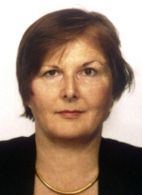
Maria-Elisabeth Michel-Beyerle
Prof. Dr. rer. nat.
Former Professor of Physical Chemistry
TUM School of Natural Sciences
born 20.08.1935
CV
Maria-Elisabeth Michel-Beyerle’s academic work centres on charge transfer processes in the condensation phase – ranging from molecule crystals, electron-donor-acceptor-complex in solutions to biological systems, proteins and DNA. In 1976, she recognised the importance of radical pair recombination and its origins in hyperfine interactions in producing the first evidence of this effect by way of its characteristic dynamics within an external magnetic field. And, in so doing, she provided the foundations for a flourishing area in spin chemistry in the form of Mary Spectroscopy, named after her. Work on magnetic field dependent electron transfer processes initially led to the observation of spin behaviour on a timescale of picoseconds, which were three orders of magnitude faster then any hitherto observed. Fascinated by the function of the photosynthetic reaction centre in the transformation of light into chemical energy, she initiated a very successful Collaborative Research Centre for the German Research Foundation at the Technische Universität München entitled “Elementary processes of photosynthesis”. Within the scope of this Collaborative Research Centre, they were able to identify very rapid transmembrane electrontransfers and their energetics for the first time, as well as the spectacular discovery of the three-dimensional structure of the reaction centre – for which Johann Deisenhofer, Robert Huber and Hartmut Michel received the Nobel Prize in Chemistry in 1988. In pursuing unconventional experimental starting points, it was possible to discover the crucial parameters that determine the mechanism for charge transfer on the basis of model studies of artificial donor-acceptor-systems in solutions. On this basis, Maria-Elisabeth Michel-Beyerle’s work showed very early on that proton transfer in the stimulated state of green fluorescent protein (GFP) is the central process of this important genetic marker. Since November 2008, research in chromophore-protein and chromophore-DNA interactions continues to be conducted in the newly established “BioFemtoLabs” at Nanyang Technological University in Singapore.
Short biography
| 1955 – 1957 | Studies in Chemistry, Universität Göttingen |
| 1957 | Visiting researcher at Columbia University, New York, USA, in the laboratory of Prof T.I. Taylor. Bursary from the Atomic Energy Commission |
| 1957 – 1959 | Studies in Chemistry, Ludwig-Maximilians-Universität München |
| 1964 | Doctorate on “India’s Electrochemistry”, Technische Hochschule Aachen |
| 1965 – 1974 | Research associate for Prof Heinz Gerischer, Institut für Physikalische Chemie (Institute for Physical Chemistry), Technische Universität München |
| 1980 – 2000 | Professor of Physical Chemistry, Technische Universität München |
| 2008 | Visiting Professor at Nanyang Technological University in Singapore |
Research projects
Initiation and spokesperson of the Collaborative Research Centre 143: Elementary processes of photosynthesis (1981-1996)
Initiation and spokesperson of the Collaborative Researchc Centre 377: Photoionisation and charge transfer in large molecules, clusters and in the condensation phase (1994-2000)
Co-ordinator of the international EU research programme CiDNA (Control of assembly and charge transport dynamics of immobilised DNA) Technische Universität München (2003-2007)
Founding Director of the BioFemtoLabs at Nanyang Technological University, Singapore (2008)
CEO Sientific Programm TUM Create, Singapur (2013 - 2021)
Awards
- Bundesverdienstkreuz (2000)
- Bayerischer Maximiliansorden für Wissenschaft und Kunst (2006)
- Bayerische Verfassungsmedaille in Silber (2009)
- Heinz Maier-Leibnitz-Medaille from TUM (2013)
You can download "Explanations of honors and awards" here [PDF 215 KB]